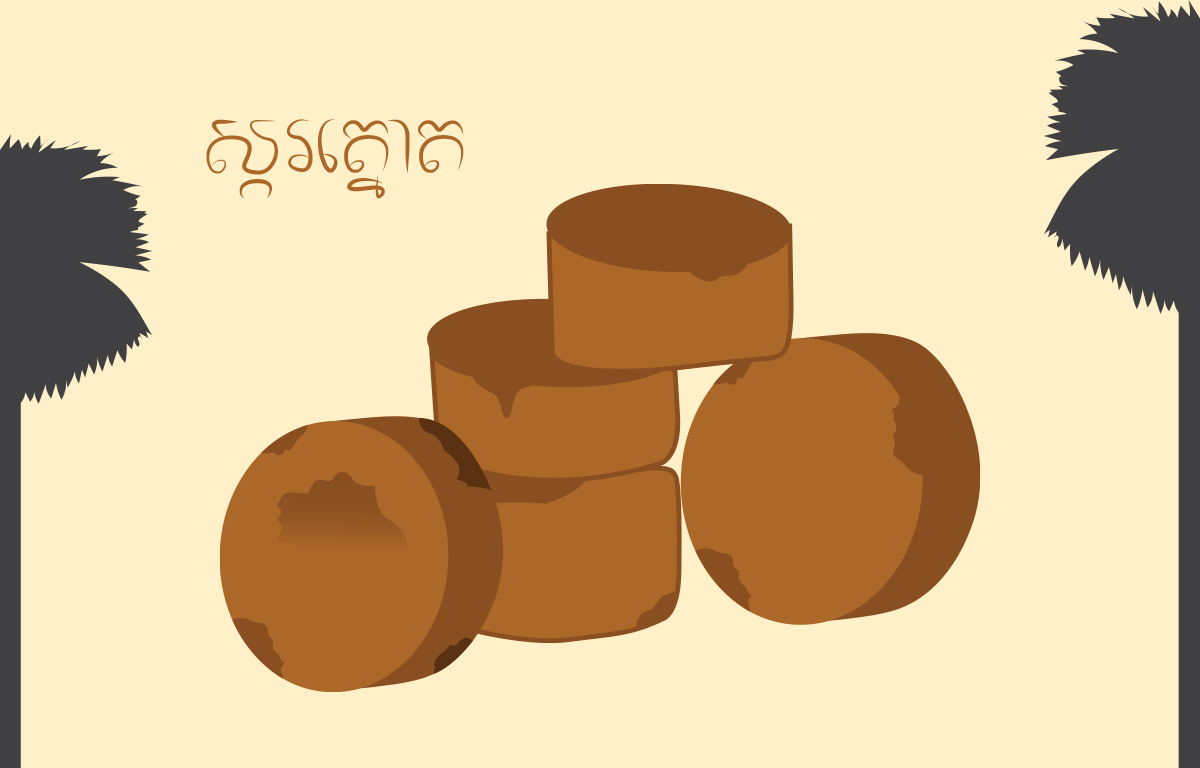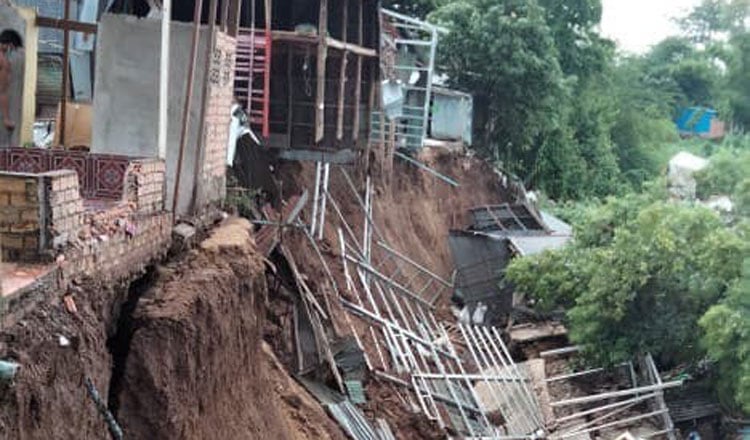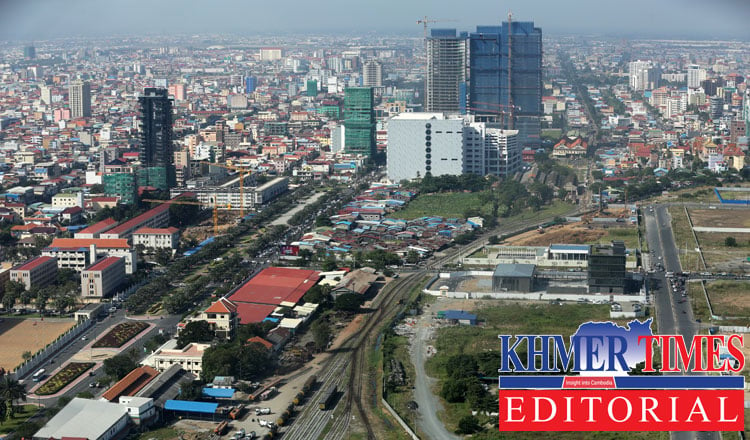The is the last of five episodes from Focus Cambodia’s series, Cambodian Eats, funded by Earth Journalism Network. Each report highlights the intersection of cuisine, culture and natural recourses’ challenges faced by communities in Cambodia.
Kampong Speu is famous for many things, such as ecotourism destinations, the tallest mountain in Cambodia, and the palm trees that decorate the rice fields along the roads of the province. Bordering Kampot, Kandal, Takeo, Koh Kong, and Kampong Chhnang, one third of Cambodia’s 3 million palmyra trees grow in Kampong Speu.
Palm trees are very important in the daily life of the Cambodian people, especially in rural areas. Palm leaves can be used for roofing, hats, mats, baskets, and the trunks can be processed into boats, furniture, souvenirs, and houses. The palmyra fruit can be used in desserts and dishes like palm cakes and the flowers can be used to make sweet palm juice and even produce alcoholic drinks.
You can also use palm juice to produce palm sugar, and in 2019, these palms were registered with the EU Geographical Indications system that “protects the names of products that originate from specific regions and have specific qualities or enjoy a reputation linked to the production territory.” The GI recognition protects the consumer and distinguishes quality products while also helping producers to better market their products.
Food Culture and Palm Sugar
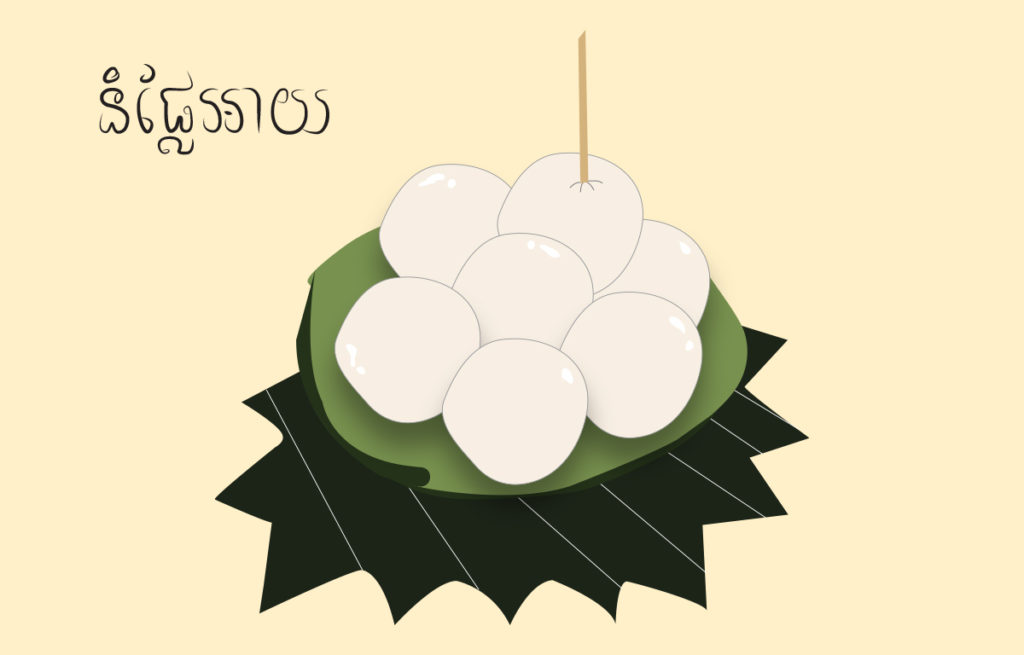
Glutinous Rice Balls Dessert or នំផ្លែអាយ. (Illustrated by: Som Dara)
With a delicious sweet taste different from cane sugar and color and texture that varies depending on its intended use, palm sugar is popular in the kitchen of the Khmer people, especially in rural areas.
The popular dessert that I want to introduce here is the Glutinous Rice Balls Dessert (នំផ្លែអាយ), which is a famous dessert amongst Cambodian people. The Glutinous Rice Balls Dessert (នំផ្លែអាយ) is usually made with three ingredients: glutinous rice flour, palm sugar, and coconut. The method of making these cakes is very simple despite their delicious, sweet taste.
First, we have to mix the glutinous rice flour with warm water, then flatten it, add the palm sugar, and pack it tightly. Next, we put the sugar-packed balls in boiling water until they float, put them in cold water and strain them on a plate, sprinkle them with coconut meat, and they are ready-to-eat.
Taking Kampong Speu’s palm sugar to another level through organization
As a reporter trainee at Focus: Ready for Tomorrow I was excited to do a story about Kampong Speu’s palm sugar for Cambodian Eats! in which I would go to witness the farmer’s lives and see the process of palm sugar production with my own eyes. Unfortunately, the third community outbreak of Covid-19 was widespread, and we were discouraged from visiting.
However, to learn more about the significance of palm sugar in Cambodia, I contacted Mr. Sam Saroeun, the President of the Kampong Speu Palm Sugar Promotion Association, by phone.
Established in 2009, the Kampong Speu Palm Sugar Promotion Association’s main aim is to protect and promote Kampong Speu palm sugar and acts as a non-profit, inter-professional association, overseeing the product quality assurance and connecting producers and trading members.

The Farmer is climbing the Palm Tree to get the juice for the Palm Sugar Production. (Illustrated by: Som Dara)
The production members of this association are 150 families in the Oudong and Samrong Tong districts of Kampong Speu province and Ang Snoul district in Kandal province. Around 10 companies are the trading members of the communities that supply sugar for both domestic and export markets.
Palm sugar and traditional livelihoods
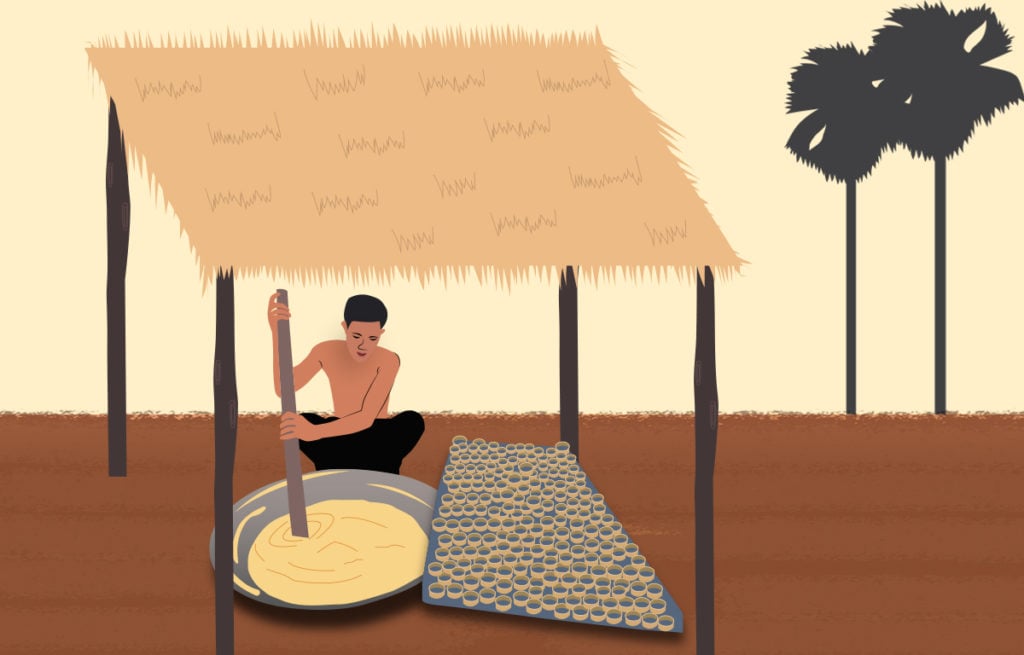
The Farmer is swirling the juice over the fire in order for the final palm sugar product. (Illustrated by: Som Dara)
Mr. Sam Saroeun explained that what makes Kampong Speu palm sugar unique is the geography of the province, which is a lowland area with moderate rainfall and favorable soil for palm trees. According to Saroeun, the greater the yearly drought, the more delicious the palm sugar.
With the harvest season in Kampong Speu usually lasting 6 months, from December to May, Saroeun said that palm sugar production depends on nature, making it difficult to estimate and guarantee specific yields. In 2021, the association could only supply approximately 150 tons of palm sugar due to the weather and labor shortages from the pandemic, but the demand was much greater, according to Saroeun.
Usually, a family business that starts with getting the juice from the tree and finishes with the stirring process that produces palm sugar, association members are required to have at least 15 palm trees to produce palm sugar. Some farmers own their palm trees, while others rent palm trees to produce sugar.
Living in Kampong Speu’s Oudong district, like other palm sugar producers, Mr. Sang Pang also farms the land and has only three or four palm trees. However, he rents more than 30 palm trees to make sugar and in exchange gives 5 kg of palm sugar per year to the palm tree’s owner.
“(It is) more profitable, that’s why I work hard. Just try hard, we get a lot [of sugar] and [are] not so tired,” Pang said.
While palm sugar in this area has long provided a source of income to locals, Saroeun’s association has improved the lives of farmers by providing the structure that ensures quality and fair pricing.
“Before they joined the association, they had faced a lot of problems in palm sugar making because sugar was expensive only during the beginning of the season,” Saroeun said. “The Kampong Sugar Sugar Association does not do that….The price is negotiated from the start until the end of one season. Next year, we will negotiate (price) again.”
Currently, farmers can sell Kampong Speu palm sugar for 6,800 KHR (1.67USD) per kilogram, a much better price than non-association farmers can get.
Bitter Challenges
Although palm sugar prices have risen and stabilized, labor and producer shortages – especially among the next generation of Cambodians – pose a threat to this traditional industry.
“Right now, only 20 percent of those who produce the sugar are in their 30s, but 70 to 80 percent are in their 40s and 50s,” Saroeun said. “Young people, if they have the strength…they go to work as labor workers instead.”
Saroeun said that by making palm sugar in Kampong Speu, a family can earn at least 4,000 to 5,000 USD in 3 months, but most young people go to work as garment workers or construction workers and give up their traditional jobs, even if they pay better.
“It is very difficult with our youth, it is difficult, to be honest. They do this, they do that, they do not want this business (producing palm sugar),” Saroeun said. “It is up to their trend. They do not think about how much money they could make.”
If there is still no interest from young people to participate in the production of palm sugar, Mr. Sam Saroeun thinks that in approximately 10 to 20 years, this traditional business may disappear.
The younger generation’s lack of interest in palm sugar isn’t the only challenge facing the industry though. Land development and demand are also problems for local farmers that rely on palm trees.
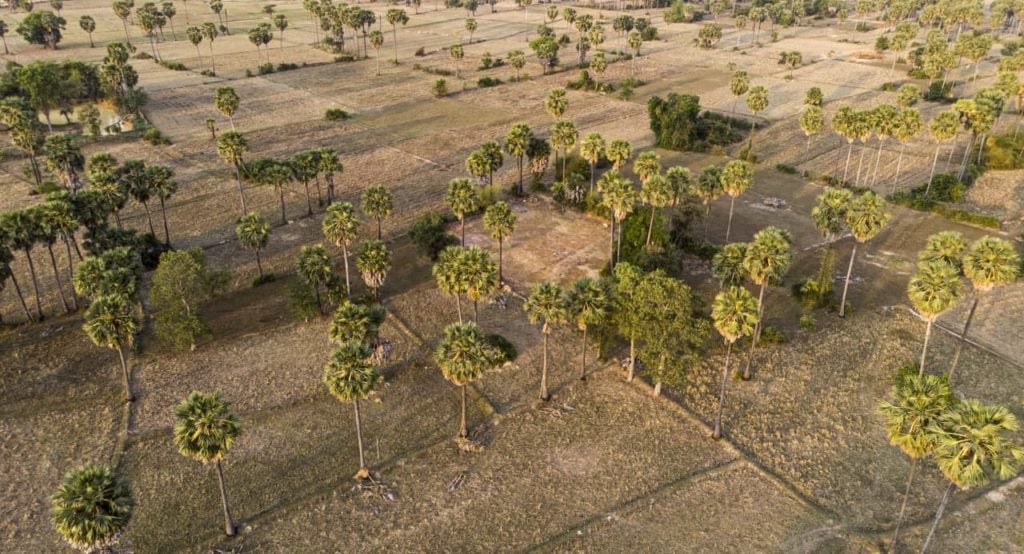
The Rice Field decorated with the palm trees in Kampong Speu Province. (Provided by: Sam Saroeun)
In exchange for development space and building materials, land that used to be overgrown with palm trees has been cleared and, unlike some plants, palm trees take decades to grow to maturity making replanting an untimely solution.
Regarding this issue, Mr. Sam Saroeun said that palm trees are private possessions, and it is the individual’s right to do whatever they want with it, but he said the association’s team also encourages farmers to plant palm trees at home.
For Pang, who rents the majority of his trees, the destruction of the palms was completely out of his control but he will have to live with the outcome.
“It was in their land, so they cut it down….. I cannot say anything because it was theirs.”
He continued, “If they cut them like that I am not sure where to climb the palm tree anymore to produce sugar…I think, if they cut it all, I will not know what to do, I will just feel sorry.”
Sweet solutions
After learning about the livelihoods of the palm sugar workers, to better understand the challenges they are facing I interviewed Loic Martin, Commercial Director of Confirel, one of the main buyers of certified organic raw materials that it transforms into a wide range of products like powdered sugar, paste, syrup, confectionery, alcohol.
In his view, creating local demand for palm products is a way to save the trees and the industry.
“To preserve this typical Cambodian resource…the younger generations of Cambodians, especially in cities, must make the choice to consume locally.” He continued, “The more the younger Cambodian consumers will support local and quality products, including palm sugar, the more they will contribute to the promotion of the national natural heritage, the more they will allow the local rural world to develop.”
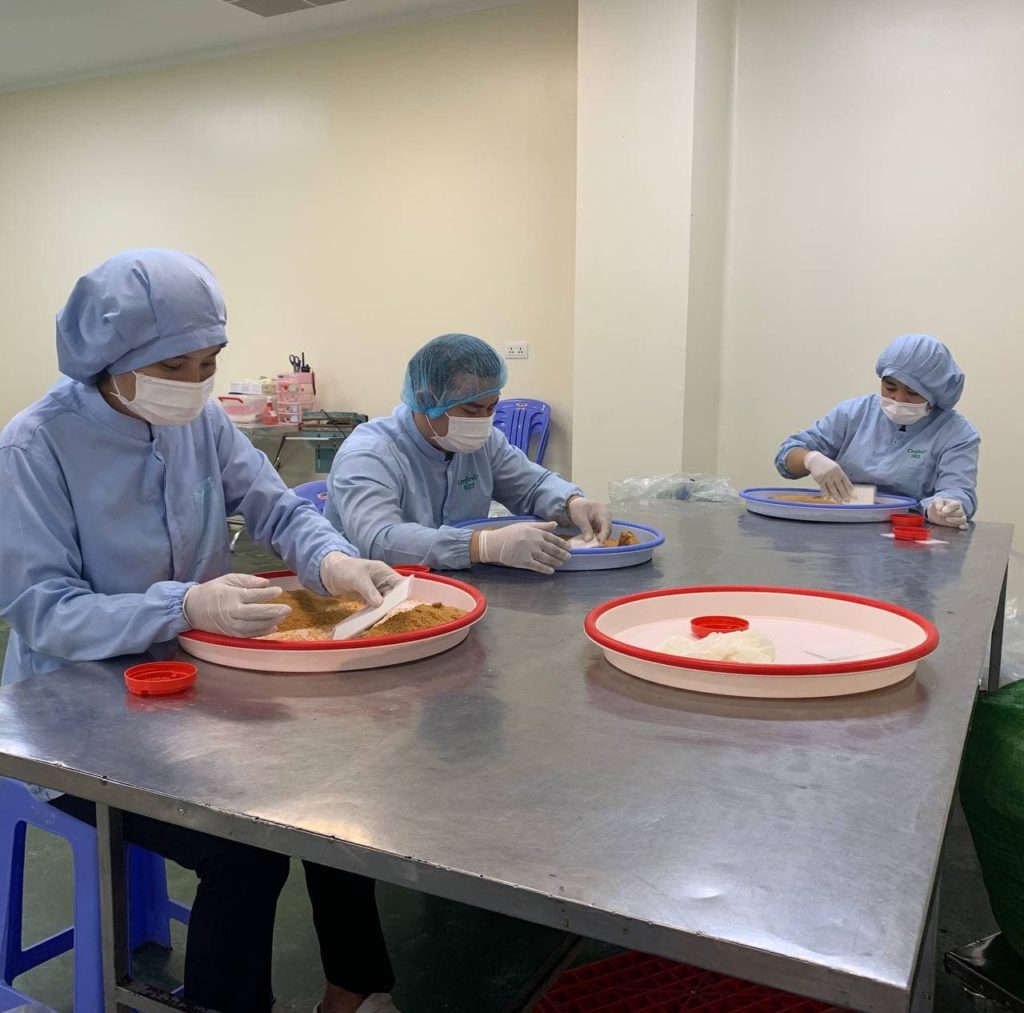
The Process of Sugar Selection at the Confirel’s factory. (Provided by: Loic Martin)
Loic concluded, “They will participate in a model of development compatible with the protection of the environment at the local level but also at the level of the planet.”
Perceptions
After speaking with people knowledgeable about palm sugar production, I think that palm sugar and palm trees are really important to the economy of the country and are an important source of income for the farmers who depend on them.
This traditional occupation is a part of national pride that we should not overlook and we must do other work to develop and look after the industry. Therefore, as one nation, we should preserve this treasure by purchasing national and regional products and supporting local suppliers. Palm trees and sugar should be valued and cared for because they have an important connection to national identity as well as traditional culture in Cambodia.
This story was produced with the support of the Internews’ Earth Journalism Network, and was first published by Focus Cambodia.


